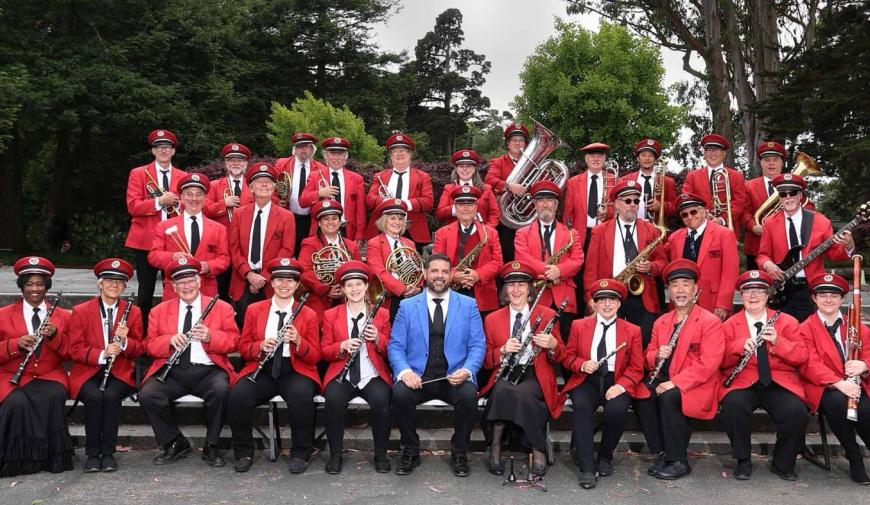
The Looney Tunes Overture in the distance is easy to identify. Not so what follows: Ralph Vaughan Williams’s English Folk Song Suite.
You may slow down walking around Golden Gate Park on April 28 in order to find out what’s next in the cavalcade of music coming from the Golden Gate Bandshell.
From 1 p.m. to 2:30 p.m., it’s the sound of the opening-day event from a concert band that was founded not long after Yerba Buena became San Francisco.
In 1882, just three decades after California became a state, San Francisco had a population of 234,000, 9 percent of which was of Chinese origin — it was also the year of the Chinese Exclusion Act.
In that faraway era, with the Great Quake still a quarter century in the future, the Golden Gate Park Band was founded to perform in the park, which opened to the public in 1870.
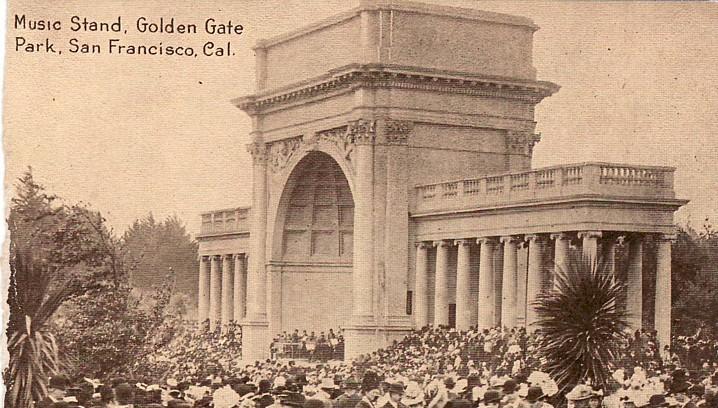
The park’s first bandstand, built in 1883, was a small wooden structure on an elevated area in front of a larger opening where people could come with their horses and carriages to hear the band.
Today, 142 years later, the band — whose members are now represented by the American Federation of Musicians Local 6 — still performs free concerts on Sundays in the outdoor Golden Gate Bandshell, also know as the Spreckels Temple of Music, built in 1900 on the Music Concourse in the heart of Golden Gate Park, between the de Young Museum and the California Academy of Sciences.
There has been a long succession of band leaders, with Michael Wirgler’s 43-year association with the group especially memorable. As the 2024 season opens, there is a new man with the baton.
He is German Gonzalez, music director and principal conductor of the Golden Gate Park Band. Originally from Pacifica, he earned music degrees from San Jose State, Sacramento State, and Arizona State.
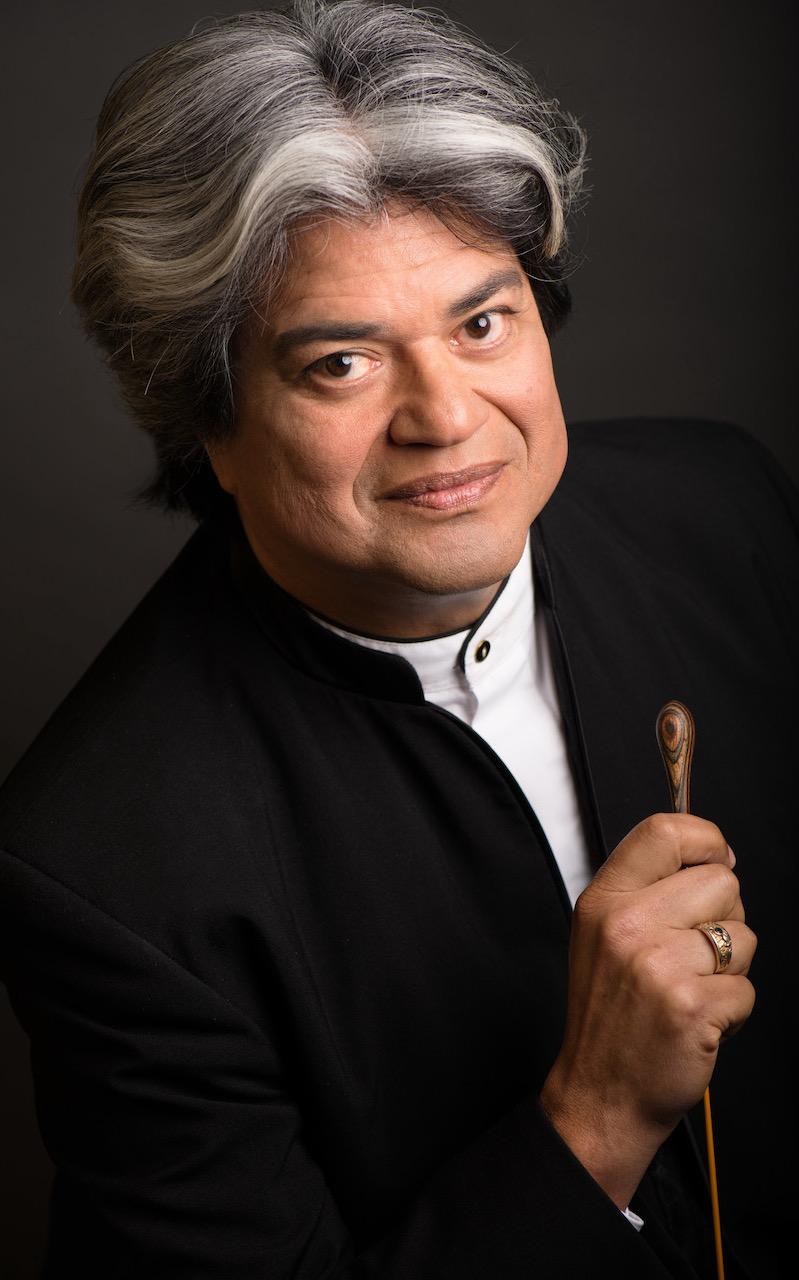
“For most of my career, I taught music in public schools, community college, and university, and I participated in community music in every city I lived in, as a trumpet player or conductor,” Gonzalez says. Currently, he directs a swing band, coaches the brass for the Peninsula Youth Orchestra, and now directs the Golden Gate Park Band.
What attracted Gonzalez to the GGPB?
“I remember coming to the Academy of Sciences on field trips as a grade-school student and dreaming that I would perform on this stage someday. I have attended many concerts over the years, and I saw musicians dressed in red coats and hats. I thought that this would be a great gig to have
“I applied when Mike Wirgler retired in 2017. I felt fortunate to conduct the band as part of the audition process, and I enjoyed the camaraderie and realized that I knew several of the musicians.
“It’s not easy to recognize individual players as an audience member. Those uniforms really hide a player’s physical identity. I wasn’t chosen [as music director] then, but I had another chance in 2021. Lucky for me, the band wanted two conductors this time around, and they offered me the associate position. Well, dreams do come true.” And then this year, Gonzalez became the band’s 11th music director.
How will he shape the future of the band?
“Programming is tricky. The music I choose is what you might consider to be of the ‘new era’ that includes contemporary and expanded repertoire. We will still play some of the standard GGPB pieces; after all, we have 25 concerts to play — that’s a lot of music.
“This year, I’m going with some [George] Gershwin at most concerts. His music is timeless. It is always fun to program a piece or two at every concert that includes audience participation: sing-alongs, guess that tune, clapping and snapping fingers to the beat of a song, and more. Crowds love that.
“For the many cultural concerts [presenting the music and dance of individual countries], I am going with more of a pops style. Sometimes that is not easy to find, especially for a 30-piece concert band. National music is written either for orchestra, piano, and/or voice. Some of that music does not translate well to band music. So, it demands plenty of research, listening, and advice from colleagues.”
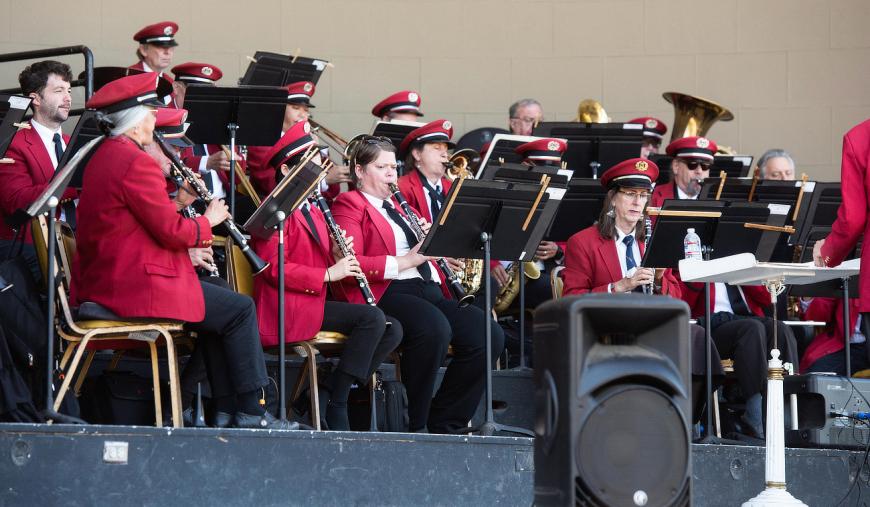
As the band has always done, numerous concerts are dedicated to different nationalities; for example, there’s Poland on May 5, Scotland on Aug. 11, Hungary on Aug. 18, Ukraine on Aug. 25, Mexico on Sept. 8, and Ireland on Sept. 15.
Gonzalez says about attendance at concerts in recent seasons:
“We regularly had good crowds at our concerts. The Fourth of July concert, the big-band concert, and the two children’s concerts probably had the largest audiences. On the other hand, when there are multiple events in the park, our audience becomes smaller. We are working on that and hope that we will continue to build our audience base.
“As far as audiences [now] versus pre-pandemic, I would say they might have been smaller in 2022, but 2023 was pretty successful. We don’t take a count at concerts, but I gauge a good audience by the way they react to our performances, and I feel a lot of enthusiasm and love from them.”
These Sunday concerts, going back to the 19th century, have created many memories in the city. Former San Francisco Ballet principal dancer Gina Ness says, “This is where I saw my first ballet when I was 6 — Ballet Celeste.”
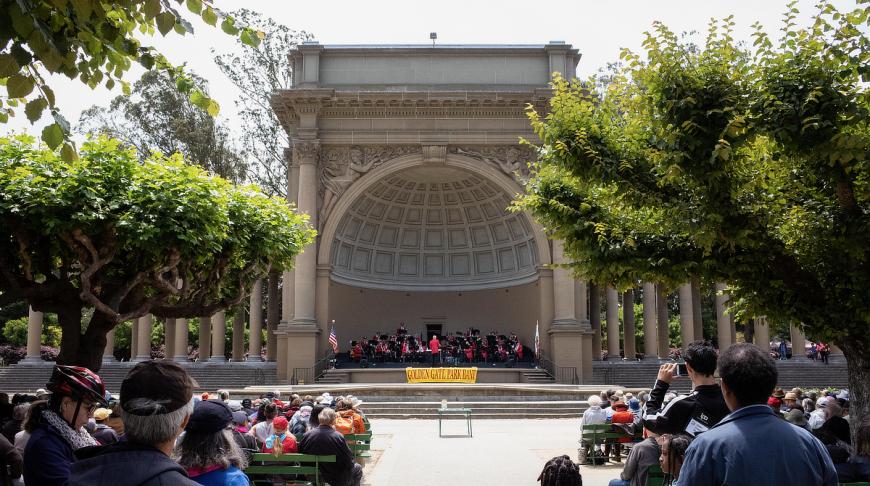
Choral director Andy Horn recalls: “Around 1980, I took the San Francisco City Chorus, then known as the Recreation Chorus, to do a few numbers with the Golden Gate Park Band and a few solo numbers.
“Unfortunately, we chose a few English madrigals, only to discover that the program that Sunday was dedicated to an Irish cause. I remember the bandmaster wasn’t particularly enthusiastic in introducing our selections.”
Yumi Takahashi, a resident of the Richmond District, which is the northern border of the park, speaks for many who have had the experience of hearing the concerts even if not sitting in the audience: “I’m so glad this tradition still continues. I’ve always enjoyed the music playing while I run or bike along the road nearby.”

